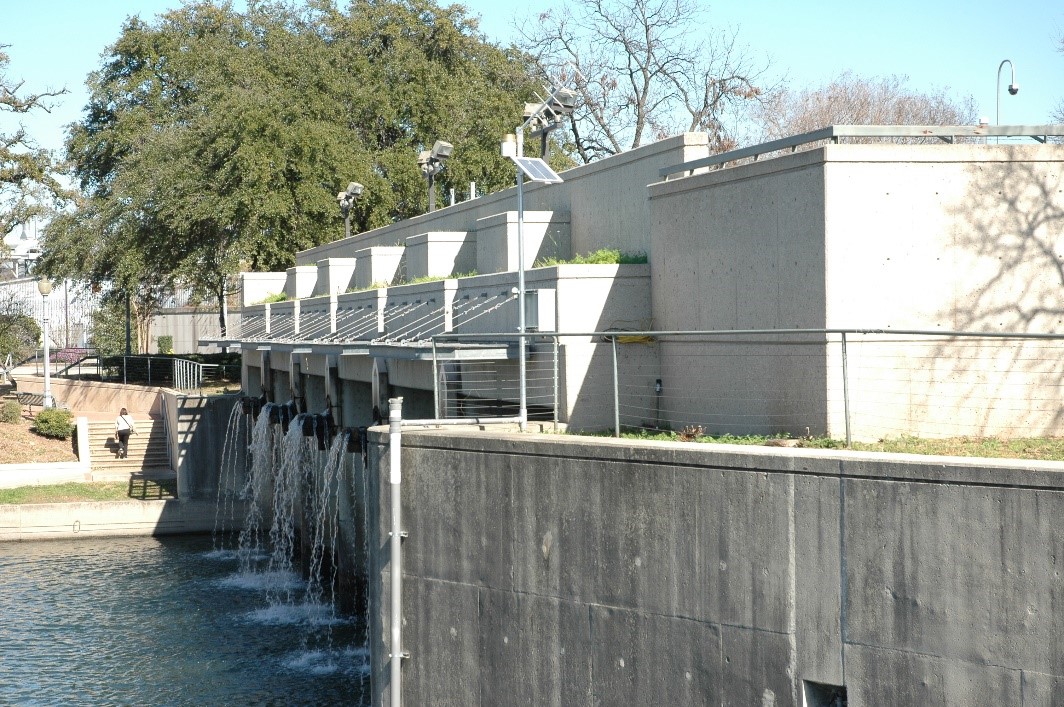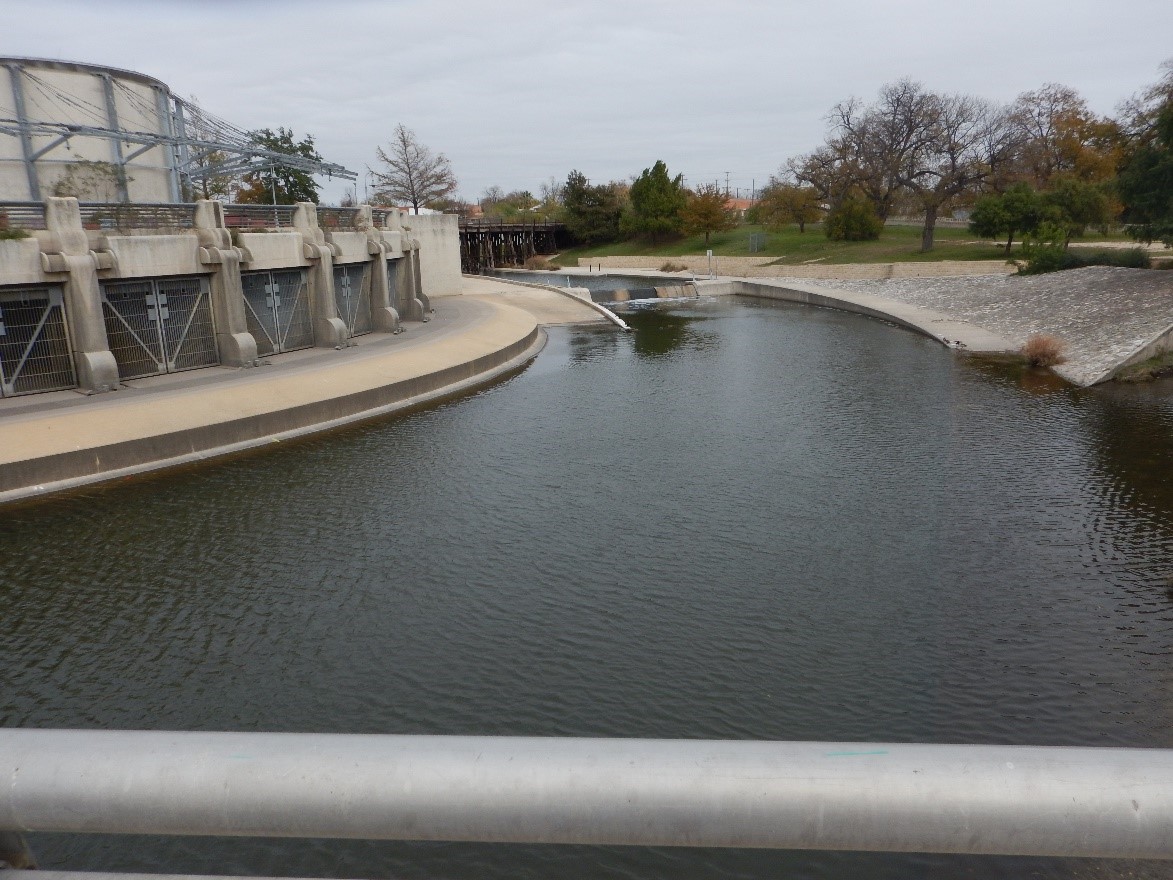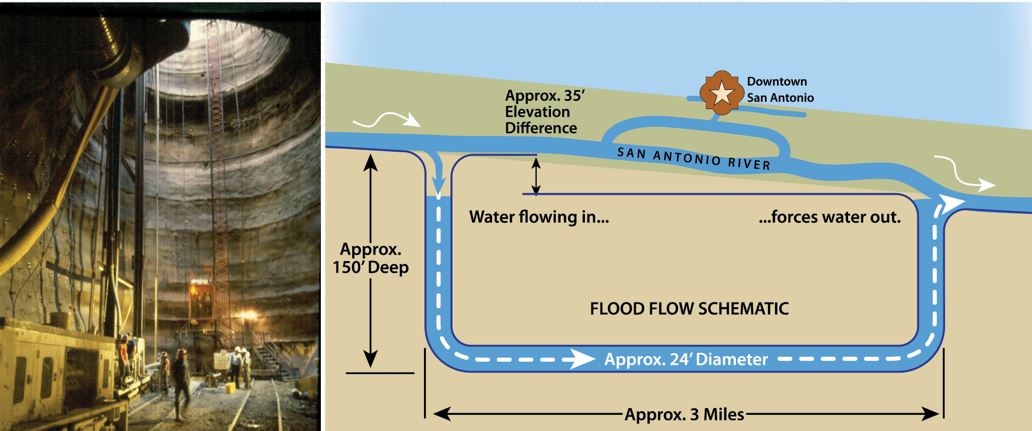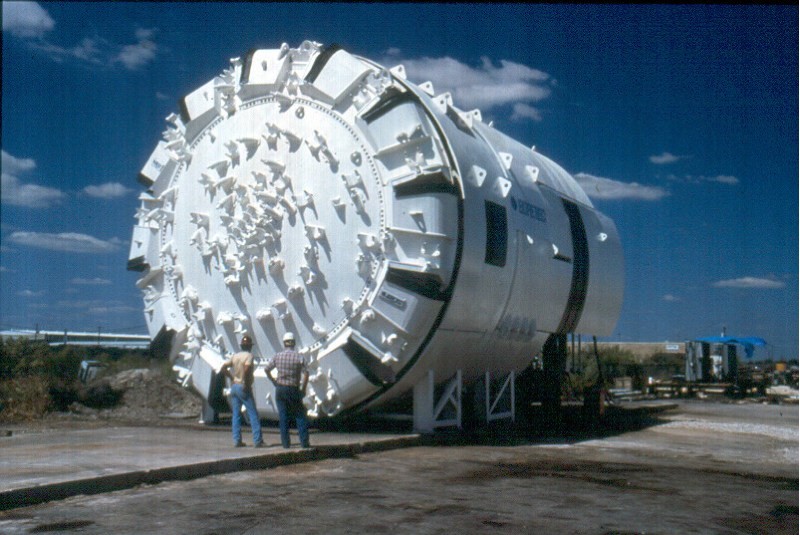As part of our commitment to safe, clean, enjoyable creeks and rivers, the San Antonio River Authority (River Authority) employs a comprehensive approach to flood mitigation. Man-made structures, such as dams and tunnels, are designed to manage the flow of flood water in order to protect life and property.
For more than twenty years, the San Antonio River Tunnel has helped protect downtown San Antonio from damaging floods which in turn has saved hundreds of millions of dollars in property damage. Learn more about this flood mitigation project and the River Authority’s role in making this project a reality.
What led to the construction of the San Antonio River Tunnel?
The San Antonio River Basin has a long history of flooding. In 1954, following a series a devastating floods in prior decades, including a flood in 1946 that caused significant damage to the community and took the lives of four people, the U.S. Congress authorized the San Antonio River Channel Improvements Project (SACIP) allowing Bexar County and the River Authority to enter into a partnership with the U.S. Army Corps of Engineers to improve flood control along 31 miles of the San Antonio River and its tributaries. This involved realignment and channelization of the river system to move flood waters quickly away from urbanized areas. Construction began on the SACIP in 1958.
By the 1980s, all the SACIP channelization work was completed, but there was still a need for further flood protection for downtown San Antonio. Work on the SACIP continued with construction on the San Pedro Creek Tunnel was started in the late 1980s and completed in 1991. The San Antonio River Tunnel project, which was a larger and more complex project, began in 1993 and was completed in December 1997 at an estimated cost of $111 million. The River Authority administered both tunnel projects in partnership with the U.S. Army Corps of Engineers. Bexar County and the City of San Antonio were also partners in the projects.
On October 17-18, 1998, south central Texas experienced record-breaking rainfall, and both the San Pedro Creek and the San Antonio River tunnels performed as designed, sparing downtown San Antonio from a devastating flood. In 1999, the San Antonio River Tunnel project won the State of Texas Outstanding Civil Engineering Achievement Award from the American Society of Civil Engineers; it also received a national-level Award of Merit. A year later, it was one of four projects to receive the Federal Design Achievement Award from the National Endowment for the Arts (NEA), as well as an achievement award from the American Society of Civil Engineers in recognition of the San Antonio River Tunnel Inlet Site.
Where is the San Antonio River Tunnel located?

The tunnel intake shaft is located between West Josephine Street and Highway 281 North and is now part of the Museum Reach San Antonio River Walk segment. The contractor, BRH Garver Company, constructed the Inlet structure to direct water from the San Antonio River into the tunnel and it consists of a 120-foot-long intake which includes rotating racks to collect trash before it can enter the tunnel. The River Authority provided landscaping, an aerating water feature, disinfection, and recirculation pumps to recirculate water from the tunnel and into the river to supplement flow during dry periods. This helps keep the River Walk flowing for the enjoyment of visitors and locals.

The tunnel outlet structure is located just north of Lone Star Boulevard on the west bank of the river along the Mission Reach San Antonio River Walk segment. The Martin K. Eby Company constructed the tunnel outlet structure which directs discharge from the tunnel shaft into the San Antonio River. The outlet structure measures 230 feet across the front and water features are included to enhance the appearance of the outlet structure.
How does the tunnel work?

The tunnel was excavated by the Ohbayashi Corporation, and the 3-mile long tunnel uses gravity to bypass floodwaters under downtown San Antonio. The inlet structure is about 30 feet higher than the outlet structure, which allows gravity to push water through the tunnel and out of the outlet structure safely into the river channel of the Mission Reach segment. During flood events, the tunnel can move up to 3 million gallons of water per minute!
Following construction of the project, the River Authority and U.S. Army Corps of Engineers turned the tunnel over to the City of San Antonio to operate and maintain the tunnel.
We hope you’ve enjoyed learning about this significant flood mitigation project! The next time you’re visiting the San Antonio River Walk, keep an eye out for the tunnel inlet and outlet structures and share this knowledge with your friends and loved ones.





